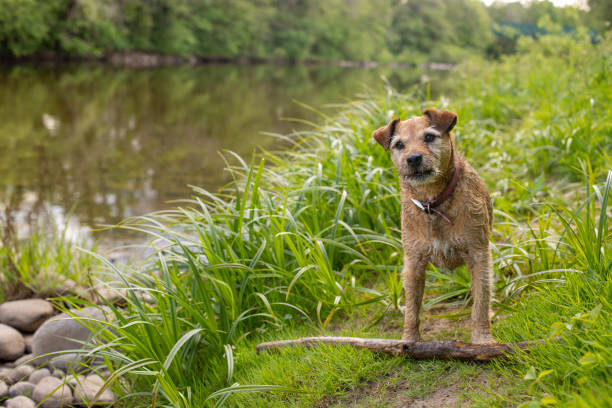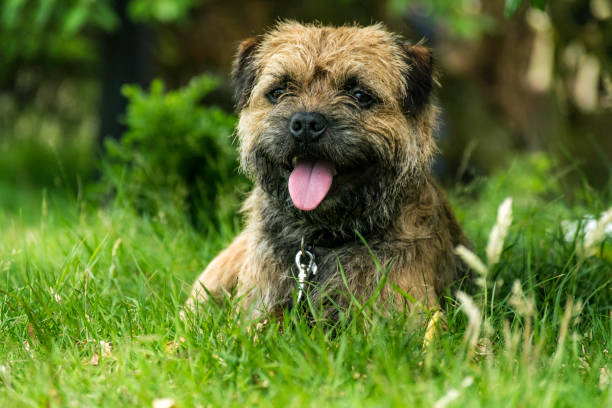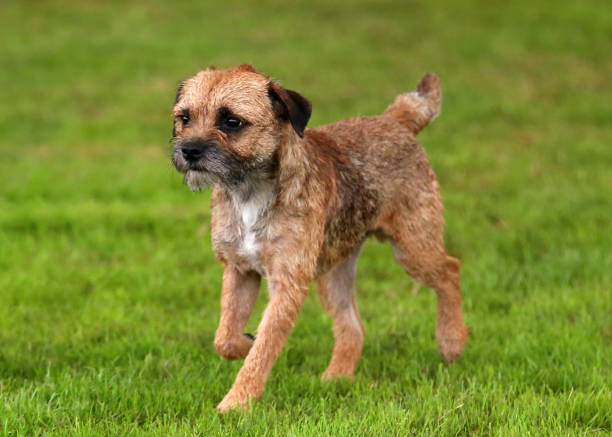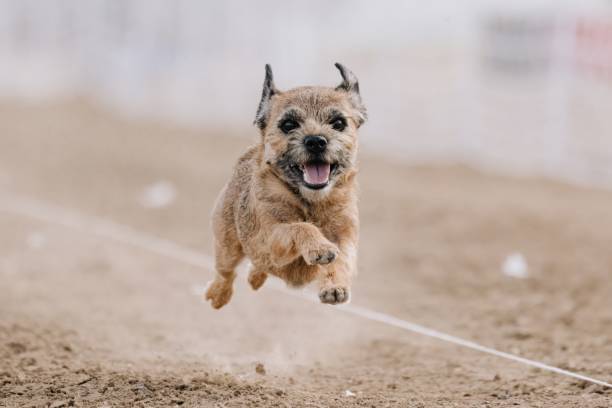Border Terrier

Breed History:
The Border Terrier originated in the rugged border region between England and Scotland, particularly in the Cheviot Hills, during the 18th century. It was bred by farmers and shepherds to be a tough, agile, and tenacious fox-hunting dog that could keep up with horses and flush out foxes from their dens.
Originally known by names like Coquetdale Terrier and Reedwater Terrier, the breed was eventually standardized and renamed after the Border region. It was formally recognized by The Kennel Club (UK) in 1920. Though once primarily a working terrier, the Border Terrier is now also popular as a loyal companion and active family dog.
|
Gender |
Height |
Weight |
|
Male |
33-40 cm |
6-7 kg |
|
Female |
28-36 cm |
5-6.5 kg |
Size – Small
Life Expectancy: 12–15 years

Breed Appearance:
The Border Terrier has a distinct otter-like head, with a short muzzle, dark, intelligent eyes, and small, V-shaped ears that fold forward. Its body is narrow and flexible, ideal for squeezing through narrow underground tunnels.
It features a dense, wiry outer coat over a soft undercoat, typically in shades of red, grizzle and tan, blue and tan, or wheaten. The coat is weather-resistant, developed for outdoor work in harsh climates. Its legs are long for a terrier, giving it surprising speed and stamina.
Breed Type – Working/Companion Terrier:
Originally bred for fox and vermin control, the Border Terrier is a determined worker with a friendly, affectionate disposition. It has a strong prey drive and remains tenacious, but is also known for being more amiable and tolerant than many terrier breeds.
The breed thrives in homes where it gets plenty of attention, play, and purpose. It is excellent with children, and its social temperament makes it a suitable family pet. It is alert and watchful, making it a decent watchdog without being overly aggressive or noisy.

Training:
The Border Terrier is smart and eager to please, which makes it generally easy to train, especially with positive reinforcement techniques. It responds well to consistency and praise, and training sessions should be kept fun and varied to hold its interest.
Socialization from a young age helps temper its natural chasing instincts. Because of its terrier tenacity, it may sometimes test boundaries or show stubbornness, especially if bored or under-stimulated.
Health & Care:
A generally healthy and robust breed, the Border Terrier has relatively few major genetic concerns. However, potential health issues may include:
-
Hip dysplasia (rare)
-
Heart defects (e.g., pulmonic stenosis)
-
Allergies or skin problems
-
Canine epileptoid cramping syndrome (CECS) – a breed-specific neurological disorder
Routine vet care, good breeding practices, and regular exercise contribute to long-term health. The breed’s lean build and high energy support good physical condition well into old age.

Living Conditions:
The Border Terrier is highly adaptable and does well in both rural and urban homes, including apartments—provided it gets adequate daily exercise. It enjoys human companionship and should not be left alone for long hours, as this may lead to barking or digging behaviors.
A securely fenced yard is a must, as Borders are known to dig and chase small animals. They tolerate other dogs well, but their hunting instinct makes them less reliable with small pets like rodents or rabbits.
Exercise:
Energetic and enthusiastic, the Border Terrier needs at least 1 hour of daily activity. Walks, runs, playtime, and interactive games are all great for keeping this terrier satisfied.
It excels in canine sports such as agility, earthdog trials, obedience, and flyball, all of which challenge its physical and mental abilities. Without enough activity, the breed may become bored and exhibit destructive tendencies.
Grooming:
The Border Terrier’s harsh, wiry coat is low-shedding and fairly easy to care for. Grooming needs include:
-
Brushing once or twice a week to remove dirt and loose hair
-
Hand-stripping the coat 2–3 times per year to maintain texture (clipping softens the coat)
-
Regular nail trimming, ear cleaning, and dental care for overall health
The coat is naturally dirt-repellent, so baths are needed only occasionally.

Advantages:
-
Affectionate and great with children
-
Low-shedding, easy-to-maintain coat
-
Generally good health and longevity
-
Intelligent, eager to please, and trainable
-
Adaptable to city or country life
-
Active but not hyper—well-balanced energy
Disadvantages:
-
Strong prey drive; may chase small animals
-
Needs daily physical and mental stimulation
-
Can be stubborn or independent-minded
-
May dig or bark if bored or left alone
-
Requires hand-stripping for coat upkeep
-
Not ideal for homes with small, caged pets

